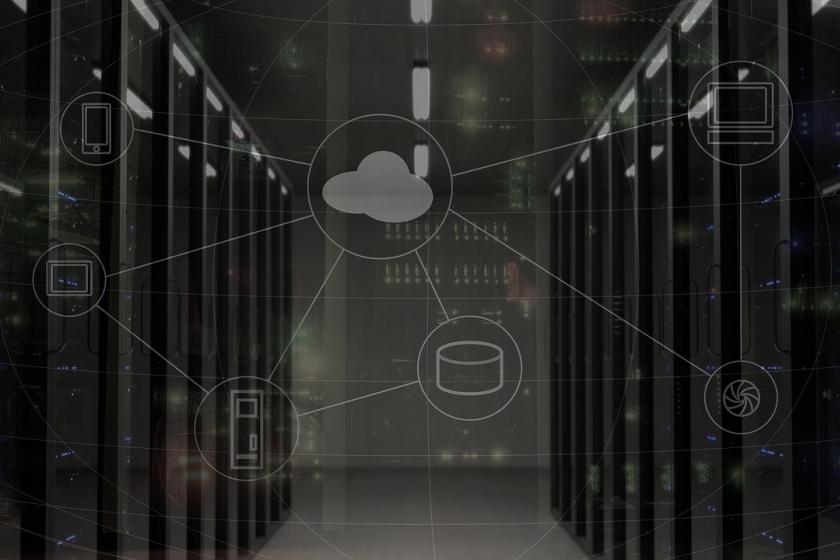Cloud-based DCIM vs. On-premise: Just the Facts
Hybrid and edge data centers are expanding the role of the traditional data center. This makes DCIM more important today. As with any management software, organizations need to know when it makes sense to keep it on-premise versus going with cloud-based DCIM.
March 18, 2019

First, let’s review what data center infrastructure management (DCIM) is. It’s software that gives you visibility into critical infrastructure to monitor its performance, energy consumption, and environmental conditions, among other things. How important is DCIM? Put it this way: Running your IT infrastructure without it is like driving a car with most of the windshield covered. Disaster is never too far away.
So let’s start from the premise that if you want well-run, highly efficient IT infrastructure with minimal to no downtime, it’s a seriously good idea to have DCIM. But should you run it on-premise or in the cloud?
Premise-based DCIM Solution
On-premise DCIM captures data from sensors across the infrastructure. The data tells administrators about infrastructure availability, airflow, power consumption, temperature, humidity, and security. These are all areas worth keeping an eye on constantly; malfunction in any one of them can lead to unplanned downtime. And downtime leads to losses of thousands or even millions of dollars.
That’s a big no-no. From the boardroom to the C-suite to customers who are prevented from accessing products and resources, downtime doesn’t make anybody happy so it must be avoided.
On-premise DCIM lets you know when something is wrong, sending alerts to a dashboard so a technician – or team of technicians – can spring into action to troubleshoot the problem. It’s not a perfect situation because by then downtime may already be happening, but at least you can get on the problem right away.
Cloud-based DCIM Solution
With a cloud-based DCIM solution, you get more functionality and ability to manage distributed IT environments. You get all the functionality of the on-premise version, plus increased visibility and machine learning functionality, which significantly increases your downtime-prevention odds. It allows your technicians to fix an issue before it causes disruption. Cloud-based DCIM also connects to a data lake that stores information from data centers and edge sites. With the use of artificial intelligence (AI) and machine learning, that data can be turned into actionable insights to improve operations.
For instance, you don’t have to schedule maintenance with a single-phase UPS. Using analytics, you can determine if a battery or the unit itself needs replacement. Looking at patterns, such as if a battery discharges and recharges frequently, you can decide over time when to replace it. Machine learning helps you maximize the asset’s lifetime, removing the risk of failure and ensuring business continuity.
What makes this possible is how machine learning works – by collecting tons of operational data on patterns and trends to define “normal.” When something starts to stray from the norm – such as battery heating, flooding caused by a pipe, or an unauthorized person walking into a server room – the DCIM issues an alert. Cloud-based DCIM uses machine learning to consolidate alarms based on device behavior. Recognizing alarms that are “normal” vs. “abnormal” allows technicians to focus on and correct the “abnormal.”
Advantages of Cloud-based DCIM
OK, you knew this was coming. Here’s why you should consider cloud-based DCIM over on-premise:
It creates the conditions for predictive maintenance. This helps you become proactive and decrease the likelihood of unplanned downtime because you service systems and components based on what the data tells you instead of following the calendar.
It minimizes downtime by turning troubleshooting from reactive to proactive.
It’s easy to deploy and available as a subscription model where you pay-as-you-grow. No need for expensive software licenses, you pay for it out of OpEx instead of CapEx.
It simplifies increasingly complex hybrid environments by combining on-premise, cloud, and edge resources.
It improves mobility, allowing IT managers to access data across all IT sites anytime/anywhere.
Some companies may be leery of a cloud-based model for reasons of security, but those who run on-premise and cloud-based solutions side by side on a trial basis typically decide to deploy their DCIM in the cloud because they find cloud-based systems are secure – in some ways, even more so than on-premise systems. For instance, updates, including security patching, happen automatically, immunizing systems against the latest cyber threats.
About the Author
You May Also Like




